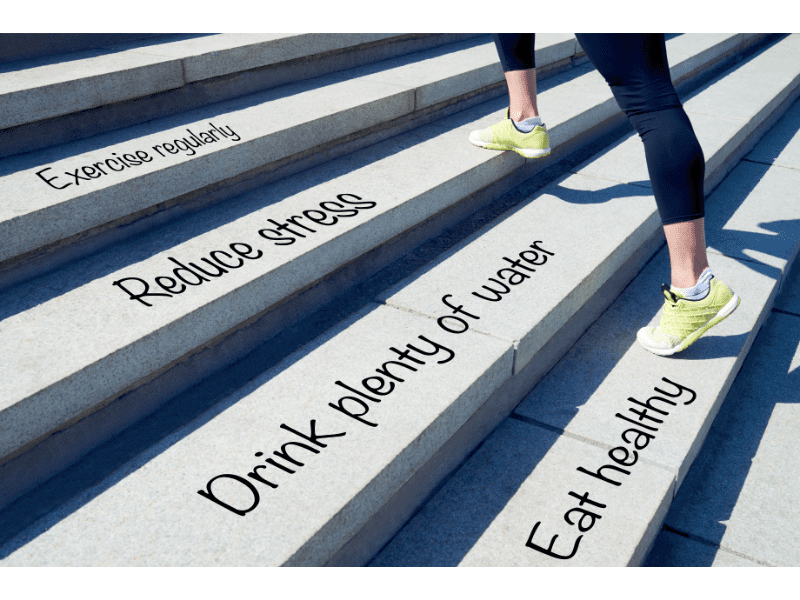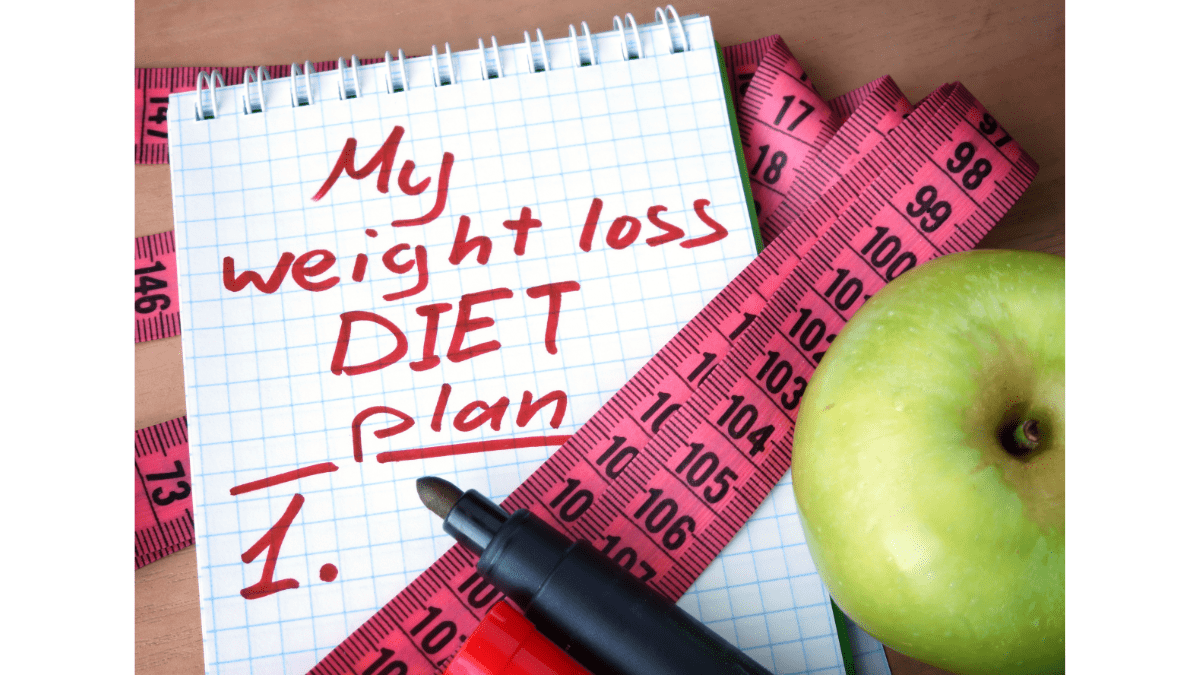Healthy Meal Plans for Weight Loss
Importance of meal planning for weight loss
Let’s start at very beginning. Picture, if you will, a crossword puzzle. You know where you want to get to (the completed puzzle), but it takes careful planning and execution to make all the words fit together perfectly. Meal planning for weight loss is quite similar. It’s not enough to simply decide you want to lose weight. It’s all about putting together a thoughtful plan that guides you toward achieving that weight loss goal, much like you meticulously solve a puzzle square by square.
Benefits of following a balanced and nutritious meal plan
But, if you think meal planning for weight loss is simply about counting calories and sticking to an austere diet, hold the phone! Like a rock band without a bass player, a meal plan lacking balance and variety can never lead to a hit record — and in this case, the hit is your health. Following a balanced and nutritious meal plan ensures that your body gets all the vitamins, minerals, and nutrients it needs to function optimally. Think bigger picture here. Beyond weight loss, you’re setting yourself up for improved health, energy, sleep quality, and mood!
Table of Contents
Understanding Effective Weight Loss Meal Plans
What are weight loss meal plans?
Let’s give this a whirl. If a weight loss journey is a road trip, then a weight loss meal plan is your GPS, mapping out your food choices for each meal and snack. It’s a detailed guide of what to eat, when to eat, and how much to eat, tailored to your specific dietary needs and goals. These meal plans are designed to help you lose weight in a consistent, sustainable way while ensuring you’re adequately nourished. They’re not about quick fixes or tricks — they’re about lifestyle modifications.
Why are they effective for losing weight?
A weight loss meal plan is like your own personal sous chef, helping you shed those unwanted pounds. You know why? These meal plans guide you towards nutritionally balanced meals, which keep you satiated and prevent overeating. They help control portion sizes, avoiding the pitfalls of “eye-balling” your servings. They also keep you on track with your goals. No more impulse purchases at the grocery store or last-minute unhealthy takeout!
How to set realistic goals for weight loss
Let’s get real. Not everyone can be an astronaut or a rockstar — just like not everyone can or should drop a ton of weight in a very short time. It’s crucial to set realistic, attainable weight loss goals. Consider factors like your current weight, lifestyle, health conditions, and your support network. Above all, remember that this is a marathon, not a sprint. Be patient with yourself and celebrate every victory, small or big.
Building a Healthy Meal Plan

Determining caloric needs for weight loss
Picture an eco-friendly car. It requires a certain amount of fuel to run optimally without wasting resources. Much like this, your body needs a specific number of calories to function at its best without storing excess energy as fat. Weight loss, quite simply, comes down to calorie deficit – consuming fewer calories than you burn. But don’t get carried away and drastically reduce your calorie intake. Aim for a safe, sustainable deficit that doesn’t leave you feeling deprived or tired.
Incorporating a variety of food groups for balanced nutrition
Imagine you’ve got a jukebox that only plays one song. Sure, it might be a good song, but after a while, you’ll crave variety, right? The same goes for your diet. Including a mix of food groups in your meal plan can give you a range of vitamins, minerals, and other nutrients. It’s about more than just fruits and veggies; think whole grains, lean proteins, and healthy fats too. A diet rainbow, so to speak!
Choosing macronutrients for weight loss
Macronutrients are the big-shot nutrients your body requires in larger amounts. That’s the proteins, carbohydrates, and fats. Yes, fats! Not all fats are bad guys. Some, like unsaturated fats, are vital for your body and can even help with weight loss. The key is to strike a balance in your macronutrient intake. Enough protein for muscle repair, adequate carbs for energy and brain function, and healthy fats for absorption of fat-soluble vitamins.
Portion control and mindful eating
Just as you wouldn’t text while driving (I hope!), don’t eat while distracted either. It’s not only about what you eat, but also how you eat it. Portion control and mindful eating go hand in hand in promoting weight loss. Eat slowly, savor every bite, chew thoroughly – let your body have the time to recognize when it’s full to prevent overeating. And remember, serve your food in small plates or bowls. The smaller the dish, the fuller it looks, the more satisfied you’ll feel.
Nutritious Meals for Weight Loss
Importance of nutrient-dense foods
Think of nutrient-dense foods as your very own superheroes, packed full of vitamins, minerals, complex carbohydrates, lean protein, and healthy fats — they contribute to overall health and support weight loss. These foods yield higher nutrition per calorie, which means you can eat less volume but still feel satisfied and energized.
Key nutrients for weight loss
No, we’re not going down the rabbit hole of ‘miracle weight loss nutrients.’ But some nutrients can certainly help. Fiber, found in whole grains, fruits, and veggies, can keep you full longer. Protein, especially lean sources like chicken, tofu, or beans, can help build and maintain muscle mass. And don’t forget about healthy fats, like those found in avocados or fish. These unsung heroes not only help absorb certain vitamins but also satisfy your hunger and prevent overeating.
Healthy recipes for weight loss
Breakfast options
Start your day with a bang! Think fiber-rich oatmeal topped with berries and a sprinkle of chia seeds, or protein-packed Greek yogurt with a drizzle of honey and a handful of almonds. Need something on the run? A hard-boiled egg and an apple can save your day.
Lunch ideas
Lunch is your mid-day fuel. Try a hearty salad with mixed greens, lean protein (think grilled chicken or chickpeas), a sprinkle of low-fat cheese, and a dressing made with heart-healthy olive oil. If you’re craving something warm, go for a lentil soup paired with a side of whole grain bread.
Dinner recipes
For dinner, think of a lean protein like grilled fish or tofu, a heap of roasted veggies, and a side of brown rice or quinoa. The magic in the variety will keep your taste buds entertained and your tummy satisfied.
Snack suggestions
When snack attack hits, be ready with healthier choices. Baby carrots and hummus, apple slices with almond butter, or even a small piece of dark chocolate can curb your cravings without derailing your diet.
Meal Prep and Planning Tips
Importance of meal prepping for weight loss success
Ever try to build Ikea furniture without instructions? Chaos, right? Meal prepping is the instruction manual for your dietary plan. Having meals planned and ready to go takes out the guesswork, reduces unhealthy impulse decisions, and keeps you on track towards your weight loss goals. It’s like having a dietary GPS that always keeps you on the right route.
Tips for efficient meal prepping
Start small; don’t try to prep a whole week’s meals all at once. Choose recipes that can be made in bulk and are freezer friendly. Invest in quality food storage containers – your meals need a comfy home too! And remember, it’s okay to repeat meals. It’s not just easier but also helps reinforce new healthy eating habits.
Creating a weekly meal plan
A weekly meal plan is the ace up your sleeve. Map out your meals (don’t forget snacks) for each day and create a grocery list based on that. Keep it flexible–if Wednesday’s meal sounds more enticing on Tuesday, it’s okay to switch! Oh, and Theme Nights? They can keep things fun and exciting. Meatless Mondays, Taco Tuesdays – get creative!
Grocery shopping tips for weight loss meal plans
Grocery shopping can feel like being a kid in a candy store – so many choices! Stick to your grocery list to avoid impulse buys. Shop the perimeter of the store, where fresh foods like fruits, vegetables, dairy, meat, and fish usually reside. Processed foods? They dwell mostly in the middle aisles of the store – sail past ‘em!
Maintaining a Healthy Lifestyle Beyond Weight Loss

Transitioning from weight loss meal plans to maintenance meal plans
Congratulate yourself on achieving your weight loss goal! But remember, finishing the marathon doesn’t mean you stop running entirely. A maintenance meal plan will ensure you keep that uber-healthy lifestyle going, keeping your achieved weight constant, and continuing to provide your body with the nutrition it thrives on.
Incorporating exercise and physical activity for overall health
You’ve heard it before: Diet and exercise are two peas in a pod. Physical activity can help tip the calorie balance in your favor and boost your mood and overall health. Find an activity you love – be it dancing, jogging, or even gardening – and integrating it into your routine.
Strategies for overcoming meal planning challenges
Roadblocks will crop up, but remember, every problem has a solution. Short on time? Plan simpler meals or try batch cooking. Finding it hard to part with favorite foods? Look for healthier substitutes that don’t skimp on flavor. View challenges as opportunities to find new favorite recipes, foods, and rituals.
Seeking support and accountability for long-term success

It takes a village to raise a child, and sometimes it takes a community to lose weight. Sharing your goals with friends or family can provide an outside accountability source and help you stay motivated when the going gets tough. No man is an island, especially when that man is trying to eat healthier.
Recap of key takeaways on healthy meal plans for weight loss
Remember the crossword puzzle analogy? Meal planning is all about finding the right fit – just like finding the perfect word for that specific puzzle square. Good nutrition, balanced meals, adequate caloric intake, mindfulness, and meal prep are all part of this journey towards sustainable weight loss. Not to forget, lots of hydration, rest, and physical activity.
Don’t wait for New Year’s for a fresh start. Every day is an opportunity to turn a new leaf. Start small, be patient, and celebrate every win. Weight loss is not a solitary goal, but rather the byproduct of a healthy and balanced life. So, all aboard the healthy meal planning train – next stop, a healthier YOU!


4 thoughts on “A Beginner’s Guide to Healthy Meal Plans for Weight Loss”